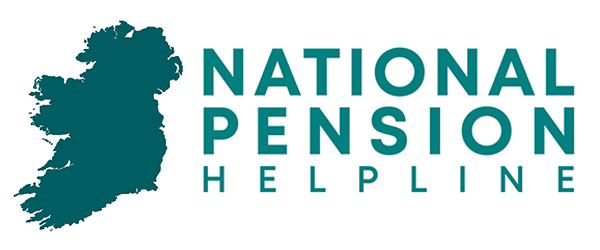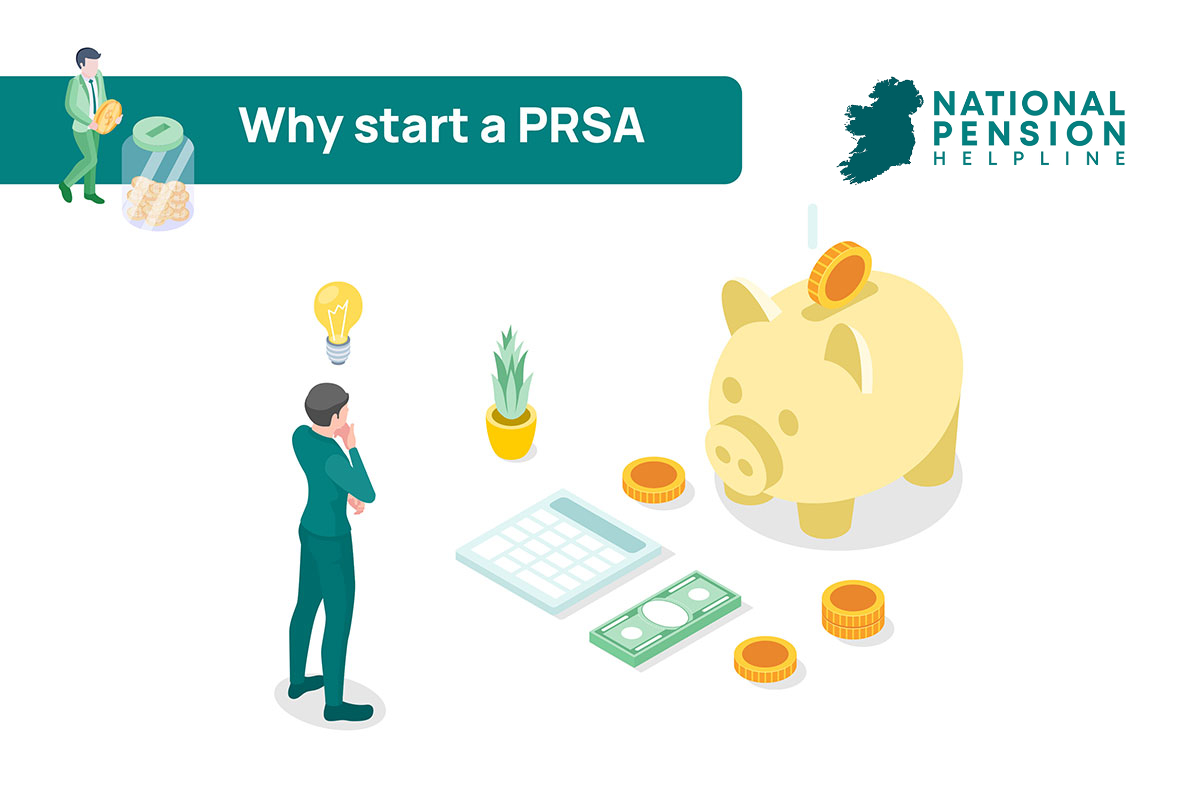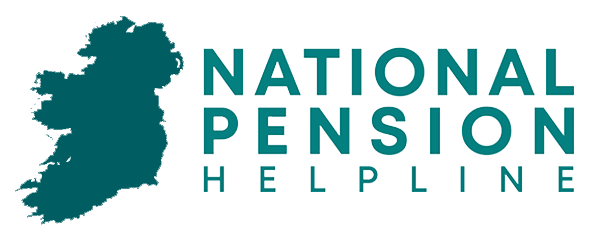What to know about taking out a PRSA in Ireland
There is a pension product available for every type of person. The difficulty sometimes is understanding what suits your requirements best.
If your employer does not offer a contributory pension plan as standard, such as a Defined Contribution or a Defined Benefit plan, they are legally obliged to facilitate your pension provision by nominating a Personal Retirement Savings Plan (PRSA) for you to invest in. PRSAs are personal pension products designed to satisfy the pension needs of the self-employed and individuals in non-pensionable employment.
For those in pensionable employment, a PRSA is a flexible, individualised pension product that can be used in place of a company pension or alongside a company pension to facilitate any additional voluntary contributions (AVCs) that you may wish to make.
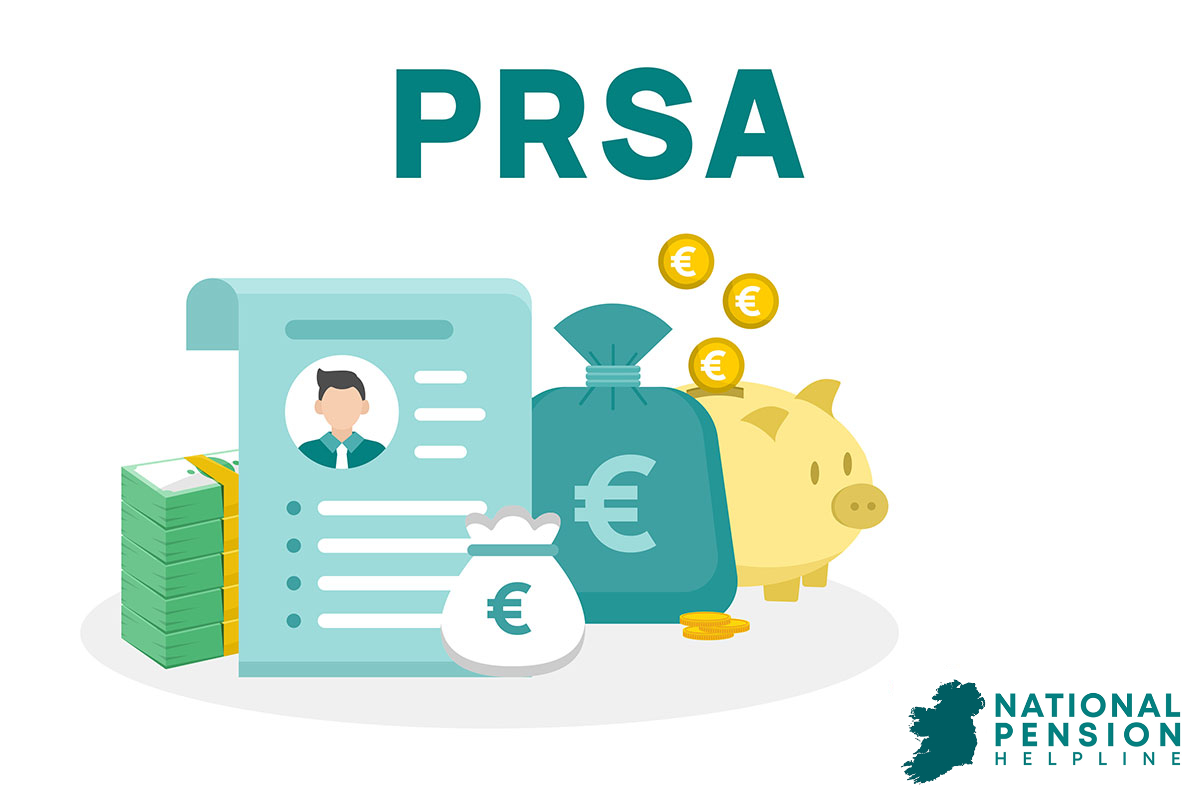
Table of Contents
What is PRSA Pension?
A PRSA is a pension product offered by financial institutions such as insurance companies or banks that is designed to allow individuals take on a long-term personal pension plan that is not tied to any one employer.
The term PRSA stands for “Personal Retirement Savings Plan”.
It is a contract between the individual and the pension plan provider.
It can be considered similar to an investment plan that allows you to save in a flexible way. Anyone can open a PRSA but it is most often used by people who are not part of a company pension scheme.
You can change employment and it will not affect your plan as it is personal to you and not a specific employer.
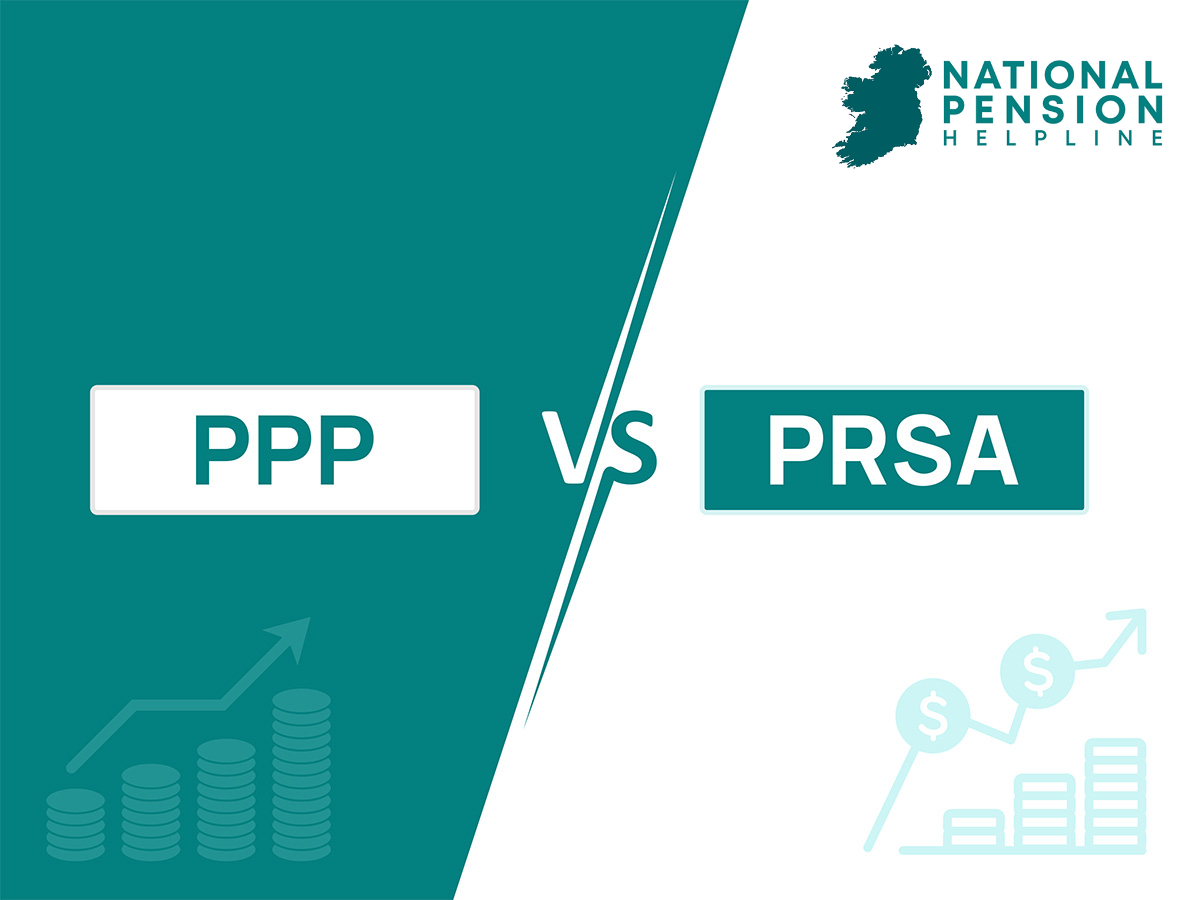
Often, people with a company plan take out a PRSA as an additional pension product to ensure that they have adequate means to support their cost of living in retirement.
A PRSA is designed to be personal to you and exclusive of your employer but it is possible for your employer to make payments to your PRSA if it chooses to do so.
Contact a pension advisor for more help on this area of your pension planning.
What are the two types of PRSA in Ireland?
There are two types of PRSA: standard and non-standard. The main difference is the level of charges that are applied and the investment options that are entered into.
Standard PRSA
The majority of people will take out a standard PRSA. Standard PRSAs have maximum charges of 5% on the contributions paid (i.e. a 95% allocation rate) and 1% per year on the value of your PRSA assets (annual management charge).
In many cases, the actual fees charged on the PRSA will be less than the maximum permissible charges.
In terms of investment selection, Standard PRSAs offer a series of collective investment schemes (investment funds) that you can invest into.
You can split your contributions between the available options or concentrate your investments in one single fund, the choice is yours.
Non-Standard PRSA
Non-Standard PRSAs do not have limits on the charges that can be applied.
Therefore, careful consideration must be given towards choosing non-standard PRSAs. Non-standard PRSAs offer a wider selection of investments than standard PRSAs.
This offers more opportunity for investment returns but at a greater risk.
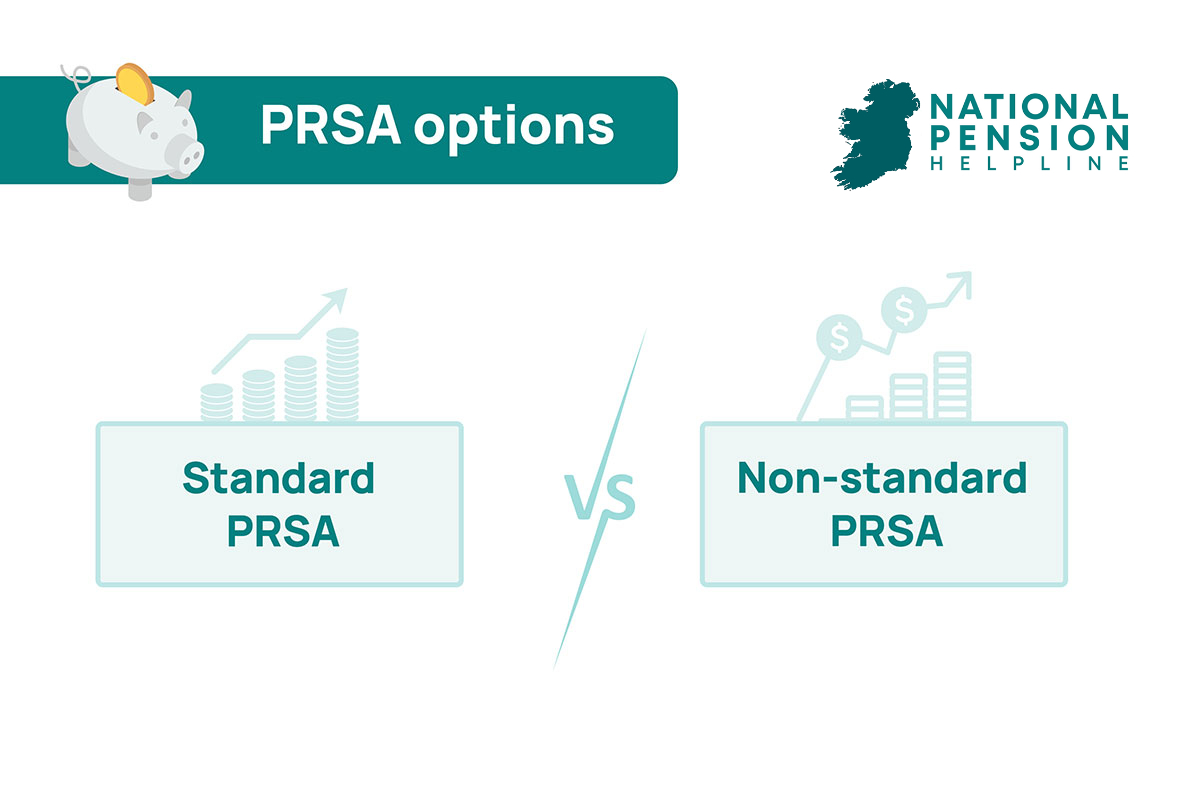
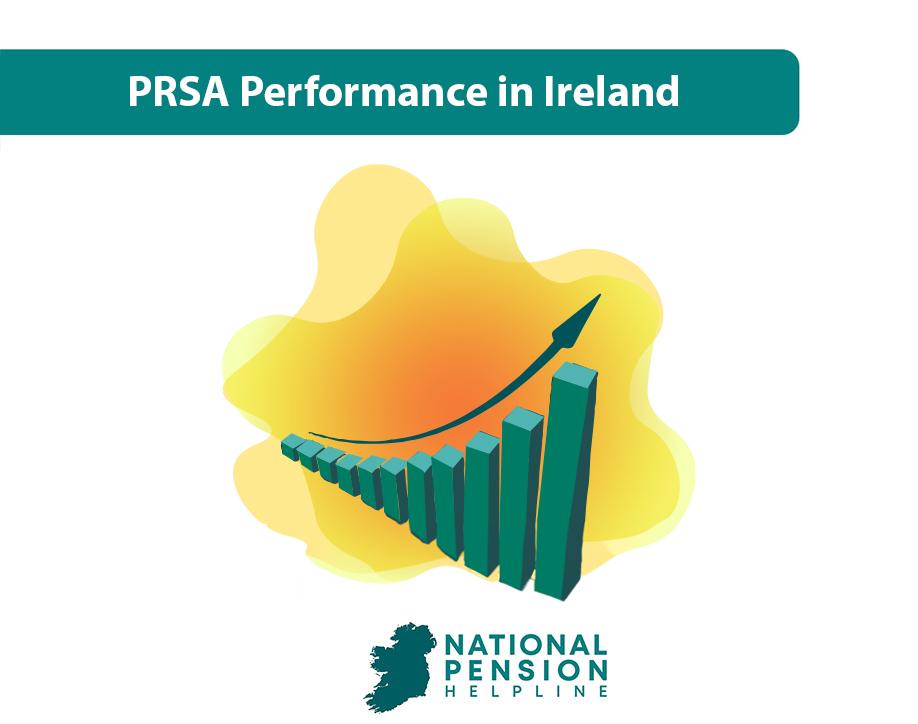
Is a PRSA suitable for self-employed people?
Many self-employed people will take out a PRSA to ensure that they have adequate pension provision for retirement. In the absence of an employer (beyond themselves) they need the security of a personal pension plan to guarantee an income that will allow them to enjoy their retirement without a loss of standard of living.
I have a contributory pension. Should I consider a PRSA too?
If you have an existing contributory pension through your employer, such as a Defined Benefit or a Defined Contribution pension you may already have enough pension cover. If you’re unsure then contact a pension advisor for advice.
They will be able to help you understand whether your existing pension is a suitable alternative to a PRSA or whether you would benefit from having both.
Can I have a PRSA and a contributory pension?
You can operate a PRSA in addition to a contributory pension. This will give you additional security in retirement and increase your overall retirement pension pot. People who have a surplus of income often open a PRSA as an alternative to a savings account and to boost their pension pot.
When can I start taking income from my PRSA?
Generally, people start drawing down income from a PRSA between the ages of 60 and 75. If you retire earlier you may be able to access funds from the age of 50 or if you experience disability or long-term illness.
Can you cash in a PRSA?
It is possible to ‘cash in’ (i.e. access a cash lump sum) your PRSA from as early as age 50 in certain circumstances. This will happen where the PRSA holder opts for voluntary early retirement. In most cases, age 60 will be the age at which the PRSA holder can access his/her PRSA assets.
If you want to find out if your pension is eligible for early withdrawal you can take our pension transfer assessment here.
Who are PRSAs suitable for?
Before we begin, it’s important to clarify who personal retirement savings accounts (PRSAs) are for.
PRSAs are intended to be utilised by the following groups:
1. Those in non-pensionable employment – i.e. those who do not have access to an occupational pension scheme through their employer.
Note: employers who don’t offer an occupational pension scheme to their employees are legally obliged to nominate a standard PRSA to facilitate their employees pension provision. In an ideal world, this would be communicated to employees, but oftentimes, it isn’t. Therefore, employees in non-pensionable employment typically have to take a proactive approach to availing of their employer’s nominated PRSA.
Key: every employee in Ireland has access to a pension through their employer by law.
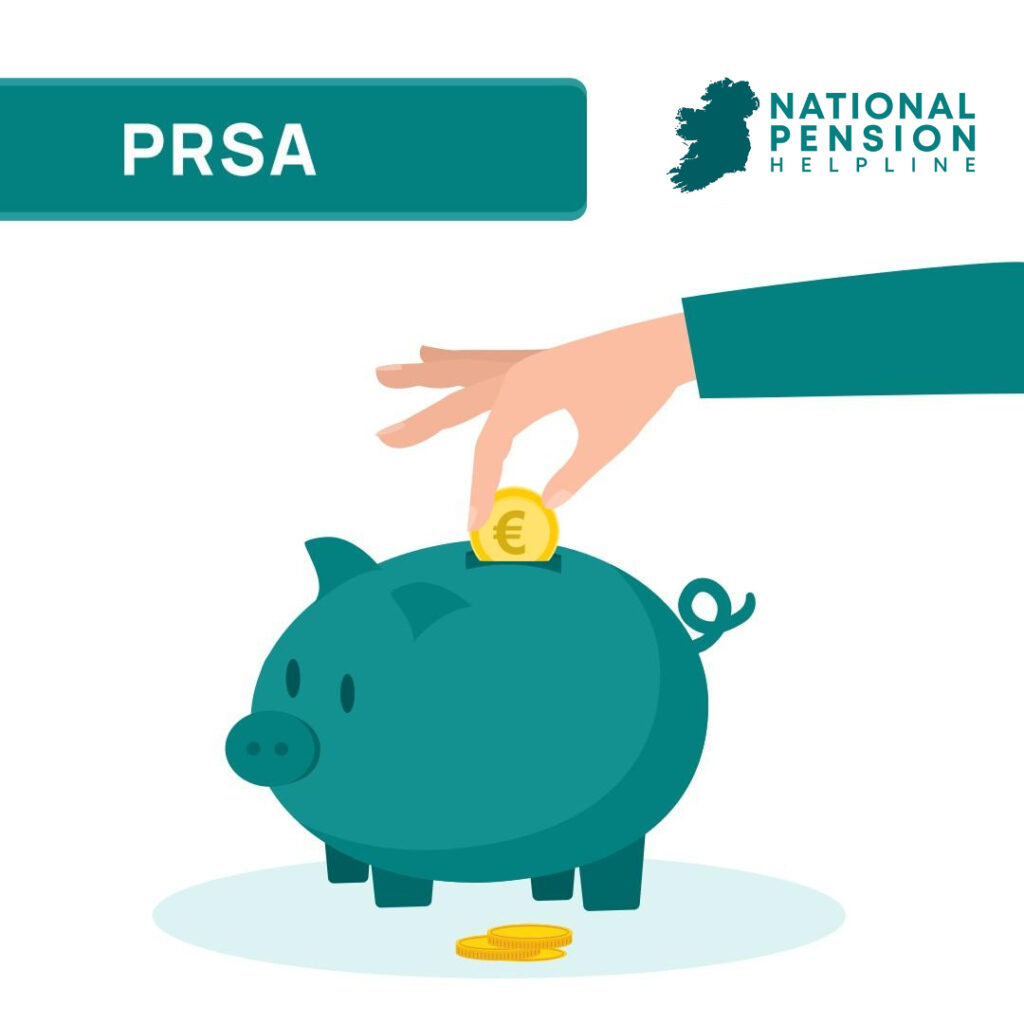
2. People who want to make AVCs – Those who already have an occupational pension scheme, but are required to make additional voluntary contributions (AVCs) to a separate PRSA
Note: employers who don’t permit AVCs to be made to an occupational pension scheme are legally obliged to nominate a standard PRSA to facilitate AVCs. PRSAs are not required for AVCs where the employer permits AVCs to be made to the occupational pension scheme.
3. Those who are self-employed – PRSAs are the most common pension vehicle for the self employed and for directors pensions in small businesses.
Note: due to the recent changes made to the tax rules surrounding PRSAs in Finance Act 2022, PRSAs have become one of the most tax efficient ways to extract cash from a business for business owners.
4. New Employees – Those who are not eligible to join their employer’s occupational scheme within 6 months of their start date. This is standard practice in many occupation schemes.
5. Death in service benefits – Those who are included in an occupational scheme for death in service benefits only. This is becoming less and less common.
It’s important to note that you, the employee, are not required to utilise the PRSA that your employer has nominated.
You can decide to set up a PRSA with whatever pension provider you choose. However, a big advantage of utilising your employer’s nominated PRSA is that tax relief on your pension contributions to the PRSA will be deducted at source (i.e. via payroll).
If you would like to learn more about PRSA fundamentals, you can check out our piece on: PRSA Ireland
Investment of your money
How is my money invested in a PRSA?
A PRSA is just a wrapper, so when you contribute money to your PRSA it’s invested into the range of investment funds that you specified via your online PRSA portal.
If you made no such specification then it’s likely that your contributions are being invested in the ‘default investment option’ of the PRSA.
The value of your PRSA depends on the performance of the selected funds. If your funds perform poorly so too will your PRSA.
Review our deep dive on PRSA performance in Ireland.
If your funds perform excellently so too will your PRSA. This is why pension fund selection is so important.

Who chooses the PRSA investment fund types?
A PRSA is a personal plan so you can have as much involvement in the fund type selection as you choose. There is a standard default investment option offered by the pension provider. Many people are happy to stick with this.
However, if you prefer, you can choose a range of different funds into which you can direct your contributions. Your pension provider can help you with this.
Tax relief and PRSAs
Does a PRSA come with tax breaks?
A PRSA, like all pension products, offers tax relief on contributions. As it is personal to you, the level of contribution is regulated according to your personal situation. Thresholds exist for the amount of tax relief at different stages of your life.
You will receive income tax relief within the following age brackets.
What is the maximum annual tax-deductible for a PRSA?
Everyone that takes a PRSA has a maximum amount of earnings for which tax relief is provided. It is currently set at €115,000. This is set by the Minister for Finance and is open to adjustment from time to time.
| Age | Contribution limits of taxable earnings |
|---|---|
| Under 30 | 15% |
| 30-39 | 20% |
| 40-49 | 25% |
| 50-54 | 30% |
| 55-59 | 35% |
| 60-plus | 40% |
PRSAs & Finance Act 2022
As a result of Finance Act 2022, employer contributions made to an employee’s PRSA are no longer counted towards the employee’s age-related contribution limit.
Employers can now elect to use a PRSA as their primary pension offering and, if they wish, they can contribute to their employees’ accounts without using up their employees’ age-related contribution limits and without risking a potential benefit in kind.
Employees investing into PRSAs can now avail of their full age-related contribution limits, regardless of employer contributions, thus bringing PRSAs in line with occupational pension schemes. This has made PRSAs more attractive.
Setting up your PRSA
Drop a message below to speak to one of our trusted advisers to discuss your options.
